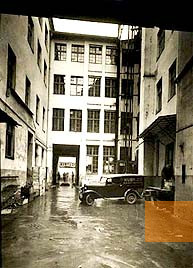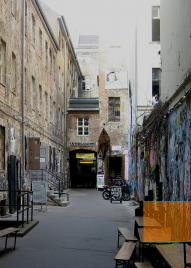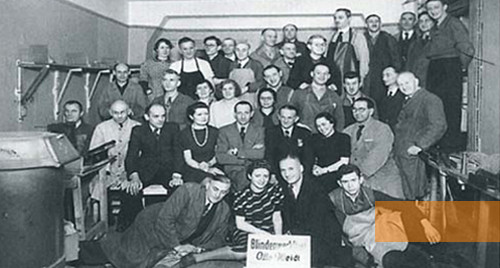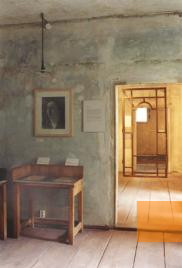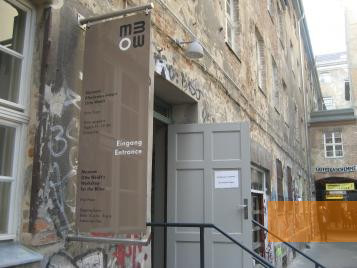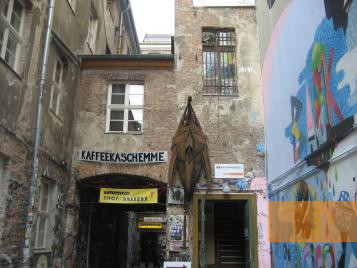Otto Weidt saved several Berlin Jews from persecution and deportation during the National Socialist period by employing them in his brush making workshop, which was declared strategic to war efforts. The »Otto Weidt Museum Workshop for the Blind« commemorates the small entrepreneur and the fate of the Jews whose deportation he could either push off or prevent entirely.
Since 1936, Otto Weidt had operated a small brush making workshop in Berlin's Mitte district, in the Rosenthaler Straße 39. The entrepreneur, himself visually impaired, mostly employed Jews who were partially blind, blind or deaf. He enlarged his enterprise in order to be able to employ more Jews, who were in danger under the National Socialist regime. Since his workshop supplied the Wehrmacht with brooms and brushes, it was qualified as »crucial to defence efforts«. This classification allowed him to continue to deploy Jews now declared as forced labourers. Often, the rooms in the Rosenthaler Straße were a place of last refuge for persecuted Jews and their relatives. Otto Weidt helped them organise hiding places, food and false papers, financing this by selling brooms and brushes on the black market. In February 1943, Weidt was able to rescue Jewish workers who had been taken to the collection camp in the Große Hamburger Straße in a major raid by bribing members of the Gestapo. He hid the four members of the Horn family in a room behind the workshop. He was not able to prevent the deportation of some of his staff members to concentration camps, yet he tried to help by sending them supplies packages. Weidt also helped his Jewish secretary, Alice Licht, escape from a satellite camp of the Groß-Rosen concentration camp to a hiding place nearby. Otto Weidt died in December 1947, at the age of 64. The Israeli Holocaust memorial Yad Vashem honoured him with the title of the »Righteous among the Nations« in 1971.
Otto Weidt was able to push off the deportation of most of his Jewish protégés, yet not prevent it. Many were murdered by the National Socialists after their deportation to concentration camps and death camps. The Jewish family Horn – whom Otto Weidt had hidden in a room behind his workshop – also met this fate. An informer denunciated their hiding place to the Gestapo. It is not known exactly how many Jews Otto Weidt was able to rescue.
The exhibition on display at the museum, entitled »Blind Trust«, was compiled by students. They were supported amongst others by writer Inge Deutschkron, herself a surviving protégée of Otto Weidt's. Since 2005, the German Resistance Memorial Center has administered the Otto Weidt Museum Workshop for the Blind. Following comprehensive renovation and restoration works, a new permanent exhibition was presented to the public in December 2006. The room in which Weidt hid the Horn family in 1944 remains in its original state and can be visited as part of the exhibition.
- Name
- Museum Blindenwerkstatt Otto Weidt
- Address
-
Rosenthaler Straße 39
10178 Berlin - Phone
- +49 (0)30 285 994 07
- Fax
- +49 (0)30 257 626 14
- Web
- http://www.museum-blindenwerkstatt.de
- info@museum-blindenwerkstatt.de
- Open
- Monday to Sunday 10 a.m. to 8 p.m.
- Possibilities
- Guided tours in several languages, guided tours through different parts of Berlin, readings, discussions with survivors


